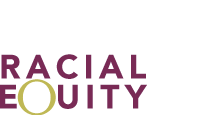
|
Please visit lgbtfunders.org to learn more about our current programming and ways to support racial equity in your grantmaking. |
 |
|
|

Enhanced Foundation Effectiveness
As a tool for increasing effectiveness and responsiveness, diversity and inclusion has become increasingly recognized as fundamental to the success of both grantmakers and grantees. Vast research has shown how a multicultural workforce can spur numerous ethical, legal, public policy, human resource management and organizational benefits—from ensured compliance with personnel-related legal requirements to an enhanced ability to attract and keep the best employees. As importantly, diversity promotes fairness in the workplace and opportunity in our democracy; it supports underrepresented communities, such as LGBTQ people of color, in leading efforts to improve societal conditions. Unfortunately, philanthropy-wide studies have found that LGBTQ people, people with disabilities, and women of color earn less, and are less likely to advance to senior level positions in foundations and to boards of directors. (And this hegemony often extends through the leadership of grantees, as our everyday experiences often affirm.) So how can grantmakers invest in diversity and inclusion to support underrepresented communities as leaders, transform the profiles of organizations and enhance their effectiveness and responsiveness? And what does this mean for LGBTQ communities of color? We explore the questions.
Featured ToolsFrameworks for understanding race A demographic snapshot of LGBTQ people of color |
||
|
|
Funder Tools For Racial Equity |
|
|
"The only way philanthropy can succeed at comprehensive, effective grantmaking is to acknowledge the complexity of our socio-cultural fabric, understand root causes of problems, and develop innovative interventions—and that can’t be accomplished without representatives of all different kinds of people at the table." ![]()
Consultant Team, Diversity in Philanthropy Project
"We asked our community stakeholders where the greatest needs lay and their unequivocal response was among communities of color and the transgender community." ![]()
Executive Director, Paul Rapoport Foundation

|
| Join the Conversation |
| Register for Email Updates |
| Share Your Success Stories |
| Email Us with Questions to Explore |
| Join Us on Facebook |
| Support Funders for LGBTQ Issues |
HOME
Content and images © 1997-2022 Funders for LGBTQ Issues. All rights reserved.
Funders for LGBTQ Issues - 45 W 36th Street, 8th Floor - New York, NY 10018-7633 - 212.475.2930 - fax 212.475.2532 -